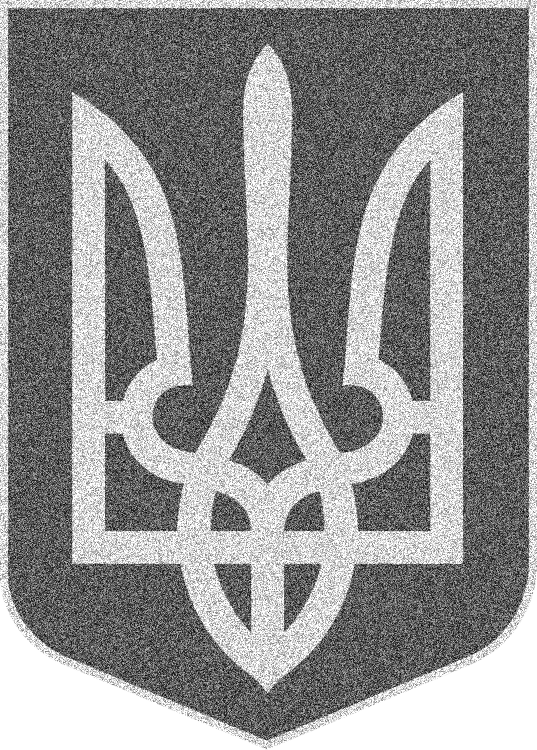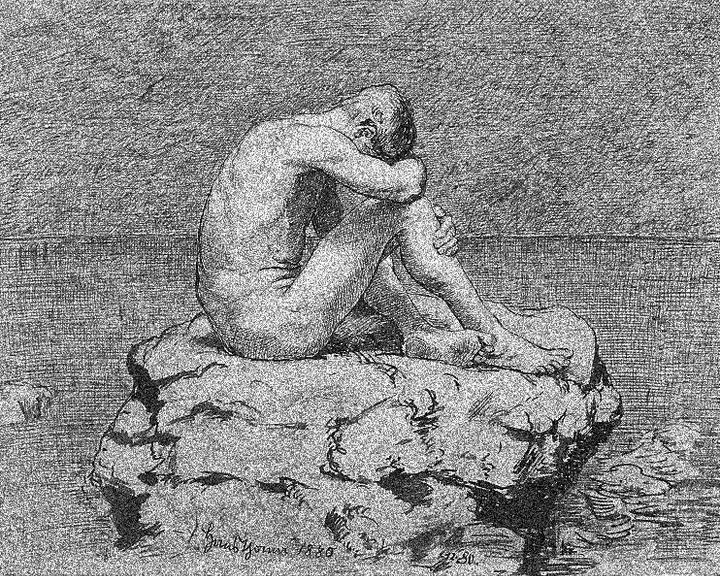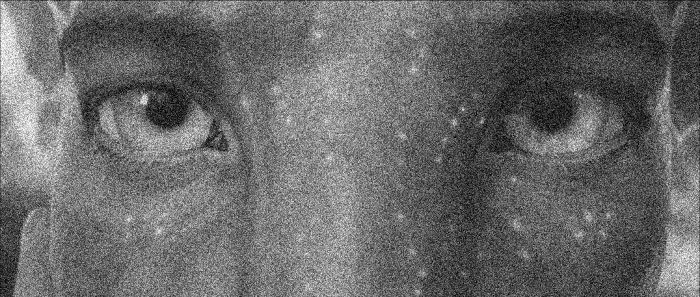Yellow and Blues
What are we to make of the soft Left’s embrace of the Ukrainian flag?

Before Vladimir Putin ordered Russian troops to invade Ukraine last February, pretty much the only way to see a Ukrainian flag flying on American territory would be to go to a city with a large Ukrainian population. And if you did happen to see one, you might not know what you were looking at. Even someone who regularly read New York Times stories on the escalating tensions between Moscow and Kyiev might not happen to remember that yellow and blue were the colors on Ukraine’s national flag. And the only way to see that little square of yellow and blue in a Twitter bio was to follow a bunch of Ukrainians.
All that changed fast when Putin’s “special military operation” started. Liberals and much of the soft Left enthusiastically embraced the symbolism of Ukrainian nationalism. As a crude yardstick for the portion of the political spectrum I’m talking about as “the soft Left,” if you know someone who never bothered to take the “Obama 2012” bumper sticker off their car when they put their “Bernie 2016” sticker on the other side of the bumper, there’s an excellent chance that their Twitter bio has a splash of yellow and blue.
It’s hard to overstate the strangeness of the shift. Do most of the people now digitally (or sometimes physically) waving the flag of this distant country even know what goals each side is fighting for at this point in the conflict? Thousands of miles from the territory where Ukrainians—and ordinary Russians who were unable to flee service‐are being buried every day, do most of the flag-wavers have any idea of who’s winning or losing, or if there’s the possibility of a ceasefire?
“Rah, rah” patriotism is hard enough to take when people are waving the flag of their own country. There’s something surreal about seeing Americans embrace vicarious jingoism. But maybe there’s a more charitable explanation.
Solidarity with the Oppressed? Reactionary Nationalism? Both?
The Russian war in Ukraine is illegal, immoral, and indefensible, and Russia’s anti-war movement deserves the unqualified support of the western Left. But it doesn’t follow from these premises that embracing Ukrainian nationalism is a normal or politically healthy response to the war.
The American invasion of Iraq in 2003, for example, was every bit as illegal, immoral, and indefensible. But neither anti-war American progressives nor their equivalents in Western Europe started buying miniature Iraqi flags. If Twitter had existed in 2003, it’s hard to imagine those red, white, and black bars adorning the Twitter accounts of left-liberal journalists.
There was a precedent in the embrace of the “Viet Cong flag”—the flag of the National Liberation Front of Vietnam—by elements of the radical Left in the final years of the Vietnam War. The wing of the Students for a Democratic Society (SDS) which became the Weather Underground was particularly enthusiastic in its embrace of the NLF flag. And, while you wouldn’t know it from watching the Aaron Sorkin movie, there was a “Viet Cong flag” on the defense table at the trial of the Chicago 7 in 1969 and 1970.
In Philip Roth’s novel American Pastoral, a conventionally liberal father despairs that his New Left daughter talks about “the Democratic Republic of Vietnam” so much you’d think she was born in Hanoi rather than New Jersey. In general, the rule was that the more performatively edgy and self-consciously alienated a segment of the Left was from American society, the more likely they were to embrace the NLF flag and associated symbols of Vietnamese Communism.
And it’s precisely on that point that the New Left’s embrace of the “Viet Cong flag” is most obviously disanalogous to the current progressive embrace of Ukraine’s yellow-and-blue. The NLF flag represented, in however flawed and authoritarian a form, a revolutionary socialist project. Embracing it put you on a collision course with the American mainstream. The Ukrainian flag represents nationalism pure and simple. Like parallel nationalisms in other contexts, Ukraine’s nationalism is the shared project of everyone from patriotic liberals to outright fascists. And since Ukrainian nationalism is the nationalism of a close American ally acting as a de facto military proxy for the United States, embracing it can in practice be an emotional avenue for left-liberals who may have been traveling in a better direction during the Bernie Sanders era to find their way back to the American mainstream.
A Democratic Bloc Against Authoritarianism?
The kind of reader most likely to actually have a bit of yellow and blue in their Twitter profile might object that these analogies miss the point. However horrifically misguided the invasion of Iraq may have been, Saddam Hussein was a murderous despot. And if the peasant revolutionaries of the NLF hardly deserve to be lumped together with Saddam, their vision of a unified Vietnam was still one ruled over by a one-party dictatorship. Ukraine, on the other hand, is a liberal democracy being menaced by an authoritarian power.
There’s some truth to this objection—though not as much as those who make it tend to assume. Ukraine is certainly more democratic than Russia—but far less so than the United States. Last year, for example, President Zelensky banned eleven opposition political parties for being pro-Russian. Ten were quite marginal, but one held about 10% of the seats in Ukraine’s parliament. Numerous independent media outlets have also been shut down for the sake of “national unity” in the war effort. Even before the Russian invasion last February, a report on Ukraine by the U.S. State Department noted numerous human rights concerns including torture, censorship, and “unlawful or arbitrary killing” by internal security forces.
When Tucker Carlson claimed on his show that Ukraine is not a democracy, the Washington Post ran an odd fact check that was full of (justified) disapproval for Carlson and his politics but ended up making his point for him. Their ruling wasn’t “false” but “lacks context.” They conceded that Ukraine isn’t all that democratic even by the standards of some other post-Soviet states and that it’s perhaps just a little bit less democratic than Viktor Orbán’s Hungary—a country that the EU recently declared no longer a “full democracy.”
The larger point that easily gets lost in all of this is that the idea that America’s role in the world is to act as the champion and defender of a democratic bloc of nations—what, during the Cold War, was called “the free world”—is itself fraught with political implications that should worry anyone who wants the United States to wind down its global military presence. We’ve seen what such rhetoric was used to justify in conflicts ranging from Vietnam and Cambodia to Iraq and Afghanistan. Anyone tempted to start waving the flag of an American proxy in the name of a global defense of democracy in 2023 should think seriously about where else that could lead.
Nationalism vs. Socialist Internationalism
Many American leftists have been willing to relax their usual anti-interventionism to one degree or another in the unusual context of the United States not perpetrating imperial aggression but providing military assistance to the victims of such aggression perpetrated by a rival power. All of the democratic socialists in Congress, for example, voted to pour tens of billions of dollars into the coffers of weapons manufacturers without preconditions.
Whether this was a correct decision is itself controversial on the Left. I have grave doubts—but let’s assume for the sake of argument that the initial policy decision was justified. That still leaves some very important questions open. How long should the United States continue coughing up tens of billions of dollars of aid that the Left would otherwise prefer to be spent on domestic social spending? Was the aid justified for the sake of fending off Russia’s early attempt at regime change and putting Ukraine in a better bargaining position for future peace negotiations? Or should the war, and the American assistance required to prosecute it, continue for as many years as it takes to achieve maximalist Ukrainian goals, like retaking Crimea?
You might answer these questions very differently depending on whether you “just” oppose Russia’s aggression or actively identify with the national project of its victim. And zooming out from these short-term policy issues, there are bigger questions here about how the Left sees itself and its relationship to nation-states and national projects in general. It’s one thing to say that we have to be strategically oriented toward winning political contests within existing national frameworks and quite another to divide the world into “good” and “bad” nationalisms. There’s surely at least some tension between the Left’s historic emphasis on working-class unity across national boundaries and cheering ourselves hoarse for whichever side we think is in the right in a land war between two profoundly conservative and inegalitarian Eastern European oligarchies.
You can make a reasonable argument that it’s possible to conjecturally embrace Ukrainian national symbolism without expressing anything beyond disgust with Russian aggression. Symbols are flexible things by their nature. That’s fair enough as far as it goes. But at a time when an American socialist Left that had just been starting to emerge from its long slumber is reeling from significant defeats, and a proxy war between great powers threatens the entire world with catastrophic consequences, I have a hard time reading anything politically encouraging in these particular blue-and-yellow tea leaves.
■
Ben Burgis is a Jacobin columnist, an adjunct philosophy professor at Rutgers University, and the host of the YouTube show and podcast Give Them An Argument. He’s the author of several books, most recently Christopher Hitchens: What He Got Right, How He Went Wrong, and Why He Still Matters.



